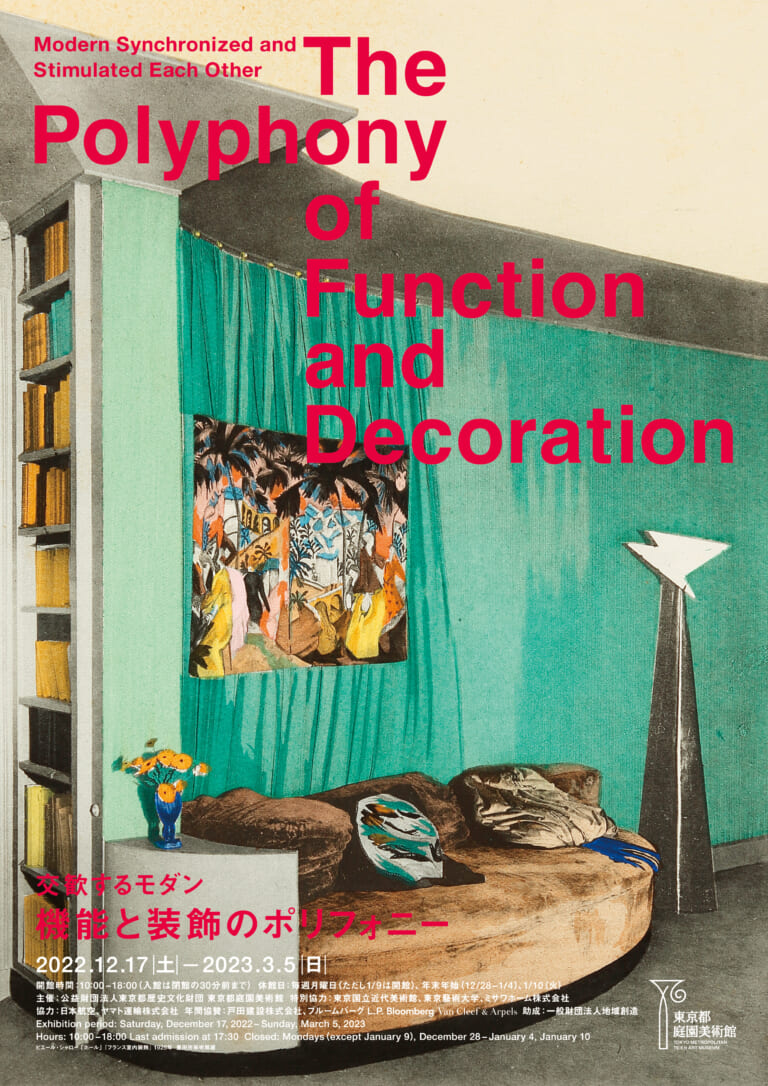The Modern was born, in its many forms, from resonances that transcend genre and national borders. In the period from the 1910s through the 1930s, the Modern appeared in a variety of forms.
Modernism based on functionalism is now regarded as having been the central trend. The Modern emerged, however, in the period in which mass consumer culture developed, an era of an ephemeral modernity, in which value was placed on decorating, as a means of keeping up with trends, of being new, always. These two versions of the Modern, commonly seen as in opposition to each other, encompassed a variety of forms of modernity and, relating to each other complexly, created an age of abundant concepts and forms.
Artists active then shared information promptly, working in synchrony in ways that transcended national and genre borders. Their work encompassed every aspect of life, private and public: paintings and sculptures, furniture, tableware, clothing, the buildings and the cities that housed and accommodated them—and us today.
The Wiener Werkstätte in Vienna and the French fashion designer Paul Poiret stimulated each other. The Wiener Werkstätte also influenced the architect and interior designer Robert Mallet-Stevens and other modernists in France. In Japan, Moriya Nobuo and Saito Kazo shared their view of life in general. Sonia Delaunay, an artist known for Simultanism, also worked wholeheartedly in fashion design. Modernists such as René Herbst, an architect and furniture designer, were intensely interested in the design of show windows, which adorned city streets. At the Bauhaus, in Germany, women artists shed new light on textiles. After the Bauhaus closed, artists from there who moved to the Burg Giebichenstein School of Arts and Crafts engaged in making that German institution their setting for education in the applied arts.
As the outbreak in 1914 of the first world war inhuman history signifies, the most important events in this period occurred in synchrony, throughout the world. This exhibition introduces the many forms of the Modern that artists, interacting with each other on occasion and resonating in polyphony, sought in those times of rapid change.


